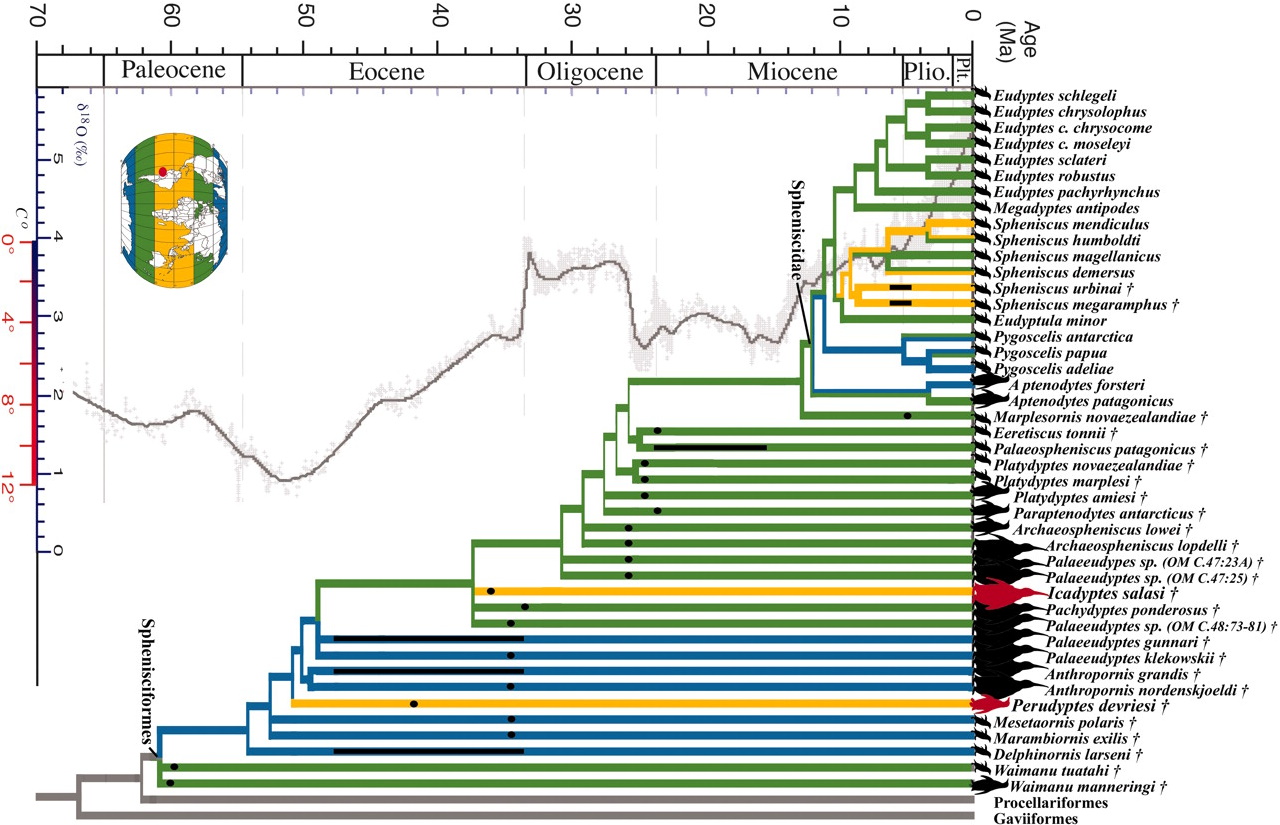Jurassic fossils may mean that feathers were all in the family.
This illustration of Kulindadromeus zabaikalicus, a newfound feathered dinosaur, shows it in its natural environment. Illustration by Andrey Atuchin
National Geographic
Published July 24, 2014
Over the past two decades, discoveries in China have produced at least five species of feathered dinosaurs. But they all belonged to the theropod group of "raptor" dinosaurs, ancestors of modern birds. (Related: "Dinosaur-Era Fossil Shows Birds' Feathers Evolved Before Flight.")
Now in a discovery reported by an international team in the journal Science, the new dinosaur species, Kulindadromeus zabaikalicus
(KOO-lin-dah-DRO-mee-us ZAH-bike-kal-ik-kuss), suggests that feathers
were all in the family. That's because the newly unearthed 4.5-foot-long
(1.5 meter) two-legged runner was an "ornithischian" beaked dinosaur,
belonging to a group ancestrally distinct from past theropod
discoveries. "Probably that means the common ancestor of all dinosaurs had feathers," says study lead author Pascal Godefroit
of the Royal Belgian Institute of Natural Science in Brussels.
"Feathers are not a characteristic [just] of birds but of all
dinosaurs." (Related: "Dinosaur Feathers Changed With Age.")
The
fossils, which included six skulls and many more bones, greatly broaden
the number of families of dinosaurs sporting feathers—downy, ribboned,
and thin ones in this case—indicating that plumes evolved from the
scales that covered earlier reptiles, probably as insulation. In
addition to its feathers, Kulindadromeus also had scales, notably arched ones that appeared in rows on its long tail. "It's really fantastic that dinosaurs with 'fluff' are found outside of China," says paleontologist Jakob Vinther of
the United Kingdom's University of Bristol, who was not on the
discovery team. "The material and specimens are nothing short of
fantastic; their age and sheer number are rarely to be expected."
Kulindadromeus
adds a whole new dimension to understanding feather evolution, Vinther
says, pointing to the fact that the three feather types found as
imprints with the fossils are different from ones found on feathered
dinosaurs or modern birds.
Jurassic Peeps
During the Jurassic, Kulindadromeus
lived near what is now Siberia's Kulinda River, sporting feathery tufts
on its legs and elbows, as well as more streamlined feathers on its
back. Its shins had "ribbon-shaped" feathers of a type never seen
before.
At least six skulls of the species, along with
hundreds of bones, have turned up in a fossil bed that was once a lake
bottom and is now a Siberian hillside. Most of the fossils were
juveniles, which suggests that they died in single events, not in a mass
catastrophe, according to Godefroit.
The dinosaur's
name essentially means "Kulinda River running dinosaur." Zabaikalsky
Krai is the region of Siberia where it was discovered (which explains
its species name, zabaikalicus). "There were
lakes and there were volcanoes there, lots of volcanoes," Godefroit
says. The plant-eating dinosaurs likely died and fell to the lake
bottom, where eruptions soon after covered them with a fine ash. That is
what preserved the feather imprints with the fossil bones. "We don't know how big this fossil bed is, and it is likely we will find more when we go back," Godefroit says.
The Feather Connection
The scales on Kulindadromeus
resemble the scaly skin seen on some birds, the study says, which also
argues for a deep genetic root linking dinosaurs to birds.
Two earlier ornithischian dinosaur discoveries, both from China, had hinted that featherlike bristles had covered dinosaurs, notes paleontologist Stephen Brusatte of the United Kingdom's University of Edinburgh. "But
the new Siberian fossils are the best example yet that some
ornithischian [beaked] dinosaurs had feathers, so it wasn't only the
theropods that had downy coats," Brusatte says. "This
does mean that we can now be very confident that feathers weren't just
an invention of birds and their closest relatives, but evolved much
deeper in dinosaur history," he adds. "I think that the common ancestor
of dinosaurs probably had feathers, and that all dinosaurs had some type
of feather, just like all mammals have some type of hair."
Even
so, Godefroit suggests that the largest dinosaurs likely had the fewest
feathers, as they wouldn't have needed them for insulation. "Just like
elephants in Africa don't need fur," he says.








No comments:
Post a Comment